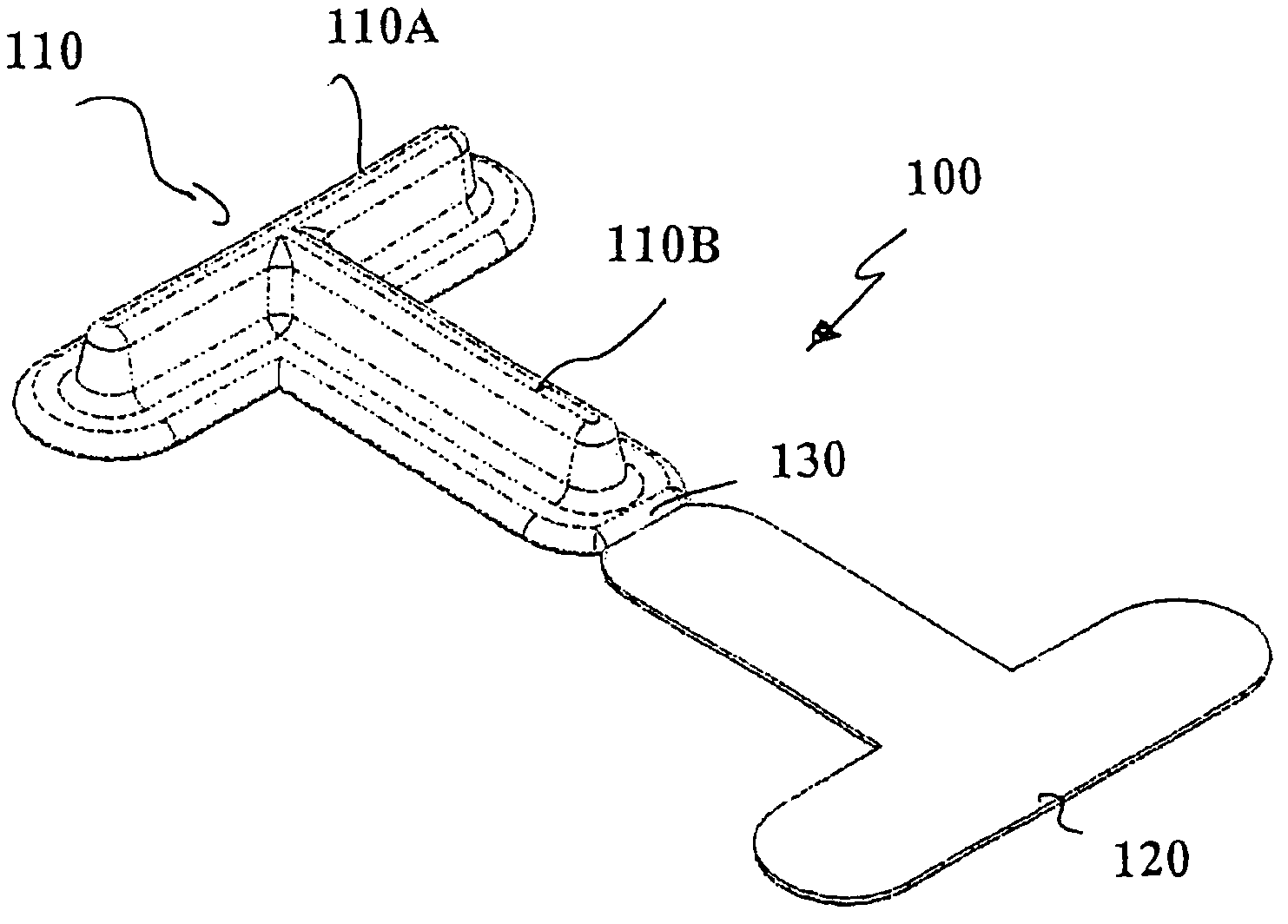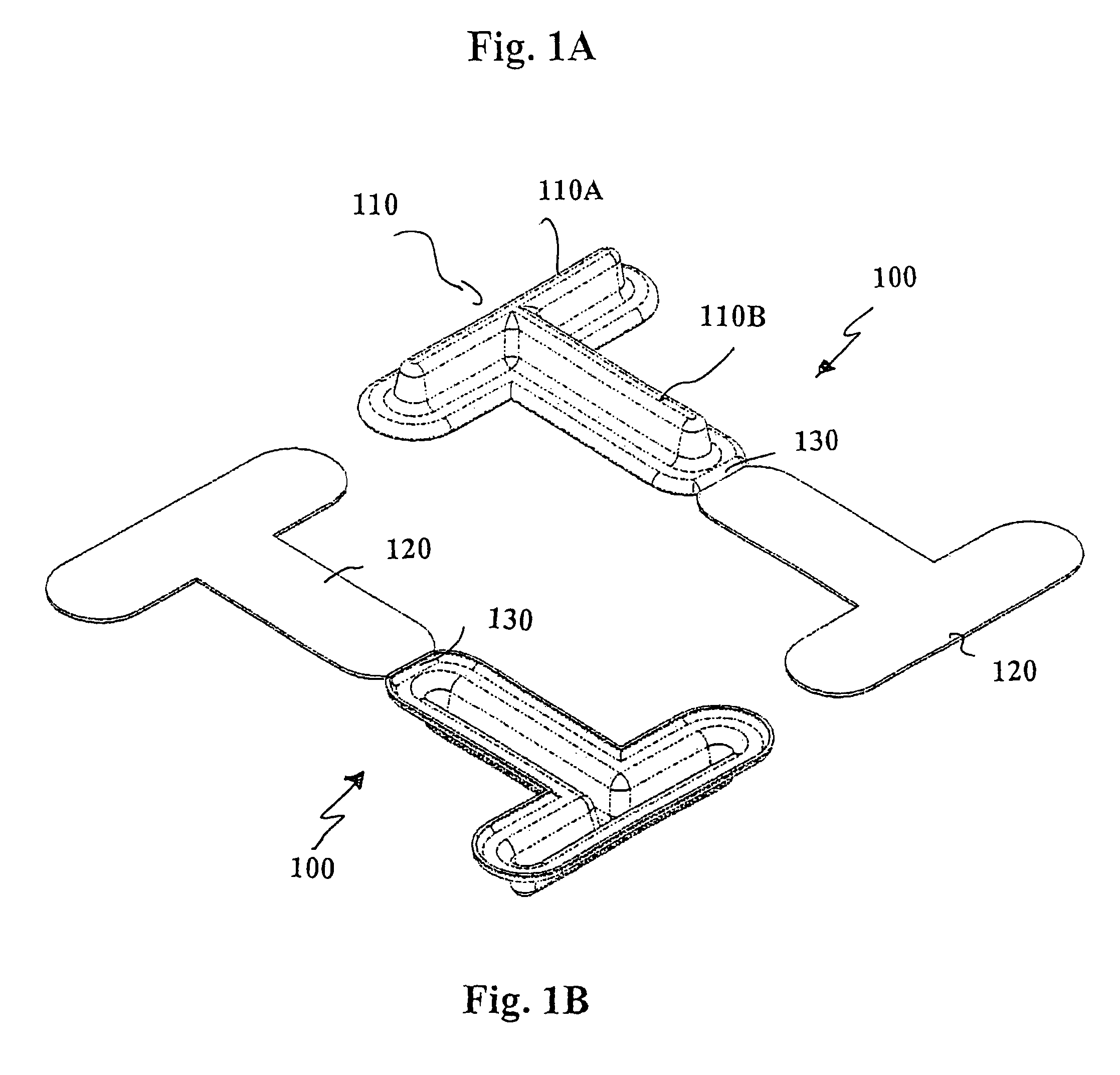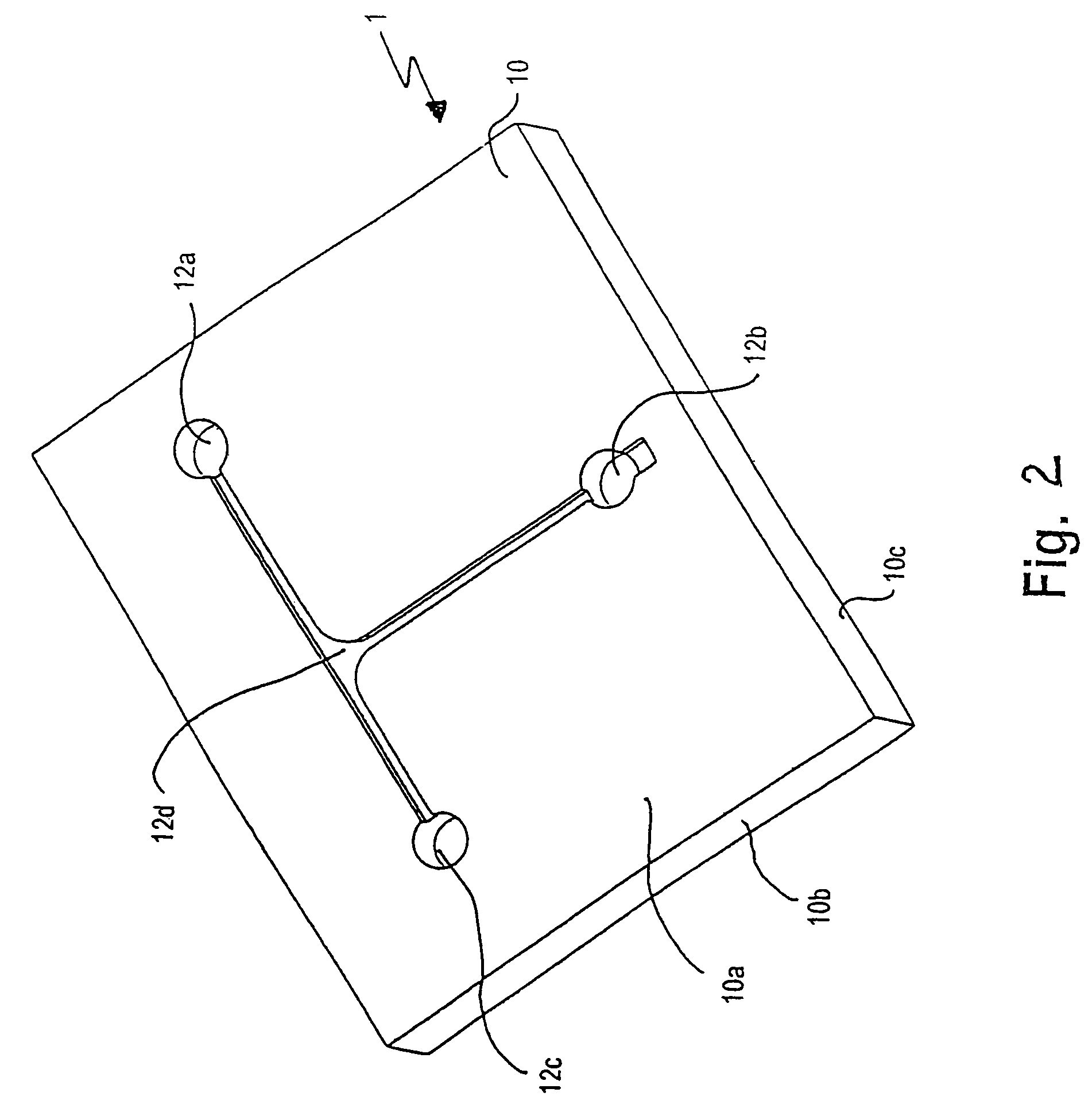System for tracking a spatial position of an object via a tracking system
a tracking system and spatial position technology, applied in the field of markers, can solve problems such as calculation errors, emission or light, and navigation system errors, and achieve the effect of reducing or eliminating problems
- Summary
- Abstract
- Description
- Claims
- Application Information
AI Technical Summary
Benefits of technology
Problems solved by technology
Method used
Image
Examples
Embodiment Construction
[0022]FIGS. 1A and 1B show a transparent marker casing 100 that includes a T-shaped structure 110 formed by two shell-like longitudinal trenches 110A and 110B, which merge into each other. The shape of the trenches flattens towards an edge. A cover 120 is connected via a hinge 130 to a longitudinal trench110B at the end facing away from the longitudinal trench 110A. The cover is preferably formed flat and / or even and seals the T-shaped opening formed by the two longitudinal trenches 110A and 110B. The longitudinal trenches 110A and 110B represent a recess, in particular a shell-like recess. The marker casing 100, in particular all the components such as the cover 120, the longitudinal trenches 110 and the hinge 130, are preferably formed from polypropylene, such as used for pharmaceutical packaging, for example. The film thickness is preferably less than 1 mm and more preferably less than 500 μm (e.g., 300 μm).
[0023]The marker casing preferably is formed from a film by means of a de...
PUM
| Property | Measurement | Unit |
|---|---|---|
| transparent | aaaaa | aaaaa |
| transparent | aaaaa | aaaaa |
| transparent | aaaaa | aaaaa |
Abstract
Description
Claims
Application Information
 Login to View More
Login to View More - R&D
- Intellectual Property
- Life Sciences
- Materials
- Tech Scout
- Unparalleled Data Quality
- Higher Quality Content
- 60% Fewer Hallucinations
Browse by: Latest US Patents, China's latest patents, Technical Efficacy Thesaurus, Application Domain, Technology Topic, Popular Technical Reports.
© 2025 PatSnap. All rights reserved.Legal|Privacy policy|Modern Slavery Act Transparency Statement|Sitemap|About US| Contact US: help@patsnap.com



